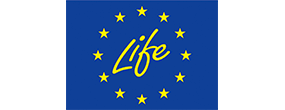Overview
Final energy consumption in Sweden was around 31.3 Mtoe in 2022. This figure implies a decrease by 0.9 Mtoe since 2000, when consumption was almost 32.2 Mtoe. Energy consumption in the transport sector has shown a decrease by 0.47 Mtoe between 2000 and 2022. During the same period, industrial consumption decreased by 1.23 Mtoe and residential sector by 0.33 Mtoe. The service sector, including non-specified activities, saw an increase by 1.23 Mtoe.
Figure 1: Final energy consumption by sector (with climatic corrections)
Source: ODYSSEEOverall energy efficiency improved by 1.3 %/year or 25% between 2000 and 2022 as measured by ODEX. The largest improvement, exceeding 1.6%/year (30% in total), took place in residential and services sectors. Progress in transport and industry was more modest, 0.8%/year (16%) and 1.2%/year (23%), respectively. It is worth noticing that only developments in the transport sector actually follow the overall trend. In industry, energy efficiency improvements, as measured by ODEX, were significant before 2006 (i.e. before the onset of the crisis), but since then little progress can be observed. Meanwhile, progress in the residential sector and services has been rather rapid and persistent.
Figure 2: Technical Energy Efficiency Index
Source: ODYSSEEIn 2022, Swedish energy savings highlight notable improvements across key sectors. Industry achieved the largest savings at 3.04 Mtoe, followed by residential at 2.65 Mtoe, services at 1.61 Mtoe, and transport at 1.46 Mtoe. The base year of 2000 sets the reference at zero, with consistent increases observed annually. The data underscores the effects of various efficiency initiatives, particularly in industry and households.
Figure 3: Energy savings by sector
Source: OdysseeSwedens total energy supply changed from 47.4 Mtoe in 2000 to 44.7 Mtoe in 2022. Decreases in final consumption (-0.9), consumption in the power sector (-0.6), and non-energy uses (-1.7) collectively reduced overall supply. An increase in other transformations (+0.5) party offset these reductions. All these factors result in a net decline of 2.7 Mtoe over the period. Particularly lower non-energy uses and final consumption contribute to Sweden's reduced total energy supply in 2022 compared to 2000.
Figure 4: Main drivers of the total energy supply variation
Source: OdysseeSweden's final energy consumption decreased by 0.9 Mtoe, from 2000 (32.1 Mtoe) to 2022 (31.2 Mtoe). The largest upward driver is activity increase, adding 8.2 Mtoe, while Energy savings reduce consumption by 8.8 Mtoe. Structural changes, mostly in industry, account for a 3.2 Mtoe decrease, and ''other'' factors add 2.9 Mtoe, offsetting some of the declines. This demonstrates that despite economic and societal growth, efficiency gains and structural shifts have contained final energy consumption.
Figure 5: Main drivers of the final energy consumption variation
Source: OdysseeThe foundation for Swedish energy efficiency policy is the tax on energy and carbon dioxide emissions. However, the effects stem not only from the tax itself, but also from the concurrent effects of other policy instruments. The tax creates a general incentive for action for reduced energy use, but because of its broad approach, further instruments are needed to target specific groups of users. Sweden has a national energy efficiency target for a reduction of the ratio between primary energy consumption and GDP by 50% for the period 2005-2030. Already by 2017 a reduction of 20% was registered. However, because primary energy consumption and GDP do not correlate in a 1:1 relation, there always exists a risk that the gains in one or several years in a row may be reversed in subsequent years. Data for 2021 show 33% reduced energy use.
Table 1: Sample of cross-cutting measures
| Measures | NECP measures | Description | Expected savings, impact evaluation | More information available |
|---|---|---|---|---|
| Support for developing energy and climate actions among public bodies/ Stöd för att utveckla energi- och klimatarbete hos offentliga aktörer | No | Project for capacity building in the areas of energy and climate, such as cooperation, method development, and dissemination of experiences. | 1.26 TJ | Link |
| Klimatsynk - national cooperation for energy and climate | Yes | The purpose of Klimatsynk synchronized approach is to avoid overlapping projects and to disseminate new knowledge between regions. | 3.77 TJ | Link |
| Support for developing energy and climate actions among public bodies/ Stöd för att utveckla energi- och klimatarbete hos offentliga aktörer | No | The Swedish Energy Agency distributed a total of EUR 5 million (annually approximately EUR 1.5 million) between 20016 and 2019 to local and regional public bodies for actions promoting energy and climate targets. | 1.26 TJ | Link |
Buildings
Sweden's final energy consumption in residential buildings sector has decreased by 0.33 Mtoe at normal climate between 2000 and 2022. Over the same period, consumption in the services sector decreased by 0.27 Mtoe.
Figure 6: Final energy consumption in buildings (with climatic corrections)
Source: OdysseeSwedish households' final energy consumption, adjusted for climate variations, has shifted by end-use between 2000 and 2022. Space heating decreased by 20% from 5.18 Mtoe to 4.12 Mtoe, and water heating by 14% from 1.19 Mtoe to 1.02 Mtoe, indicating some efficiency gains or changes in heating pratices. Meanwhile, energy consumption for electrical appliances and lighting increased by 22% from 1.24 Mtoe to 1.51 Mtoe.
Figure 7: Energy consumption by end-use of households (with climatic corrections)
Source: OdysseeEnergy consumption of space heating per m2 has shown a significant downward trend between 2000 and 2022, from 11.5 to 7.88 koe/m2 (-1.7%/year), although there are of course annual variations. This is largely due to more energy efficient buildings (building materials, windows) or fuel substitution (e.g. installing heat pumps). Electrical appliances and lighting consumption has increased by 3.0 % between 2000 and 2022 to reach 0.328 toe per dwelling. On the contrary, water heating consumption per dwelling has decreased from 0.28 toe to 0.22 toe (-1.1%/year). There is also a slight increase in energy used for cooking.
Figure 8: Energy consumption of household space heating per m2 (with climatic corrections)
Source: ODYSSEEFigure 9: Energy consumption per dwelling by end-use (except space heating)
Source: ODYSSEEFigure 10 below shows that Swedish household's electricity consumption per dwelling, adjusted for climate variation, has shifted between 2000 and 2022. Thermal uses (e.g. heating systems) slightly decreased from 4390 kWh/dw to 4361 kWh/dw which indicates efficiency gains or changed heating practices. Electricity for appliances and lightning rose from 3420 kWh/dw to 3820 kWh/dw.
Figure 10: Electricity consumption per dwelling by end-use (with climatic corrections)
Source: OdysseeTotal energy consumption of households decreased by 0.33 Mtoe between 2000 and 2022, from 7.29 to 6.96 Mtoe. The single most important factor pulling down energy use is energy savings, amounting to 2.65 Mtoe. This is however counterbalanced by upward trends, such as the increasing number of dwellings, more appliances per dwelling and larger homes.
Figure 11: Main drivers of the energy consumption variation in households
Source: ODYSSEEBetween 2000 and 2022, space heating consumption for households decreased by 1.02 Mtoe from 4.98 Mtoe to 3.96 Mtoe. Single most important factor pulling down energy used in space heating is savings by 1.69 Mtoe. Activity and larger homes are factors that are pulling upp the energy use.
Figure 12: Main drivers of the space heating consumption variation of households
Source: OdysseeMost notable change is in the services by branch is ''Other services'', which dropped from 1.35 Mtoe to 1.1 Mtoe between 2000 and 2022. Energy consumption in health services also declined, from 0.52 Mtoe to 0.45 Mtoe, while hotels and restaurants increased from 0.18 Mtoe to 0.24 Mtoe. Other branches remained relatively stable, exhibiting only minor fluctuations in energy use.
Figure 13: Final energy consumption of services by branch
Source: ODYSSEEElectricity consumption per m² in services has increased by 17.8% over the period 2000-2022. Energy consumption per m2 in services has decreased by 10% over the period 2000-2022.
Figure 14: Energy and electricity consumption per m² in services (with climatic corrections)
Source: ODYSSEEIn Sweden taxes on energy and carbon dioxide are a powerful instrument for energy efficiency. It has been proved that the energy savings resulting from taxation has had a major impact in the reduction of energy use. However, taxation is supported by other policy instruments, for instance technology procurement groups. By this is meant that certain actors jointly make purchases of new technology in order to put a downward pressure on prices. There are currently three of them affecting buildings. One is directed towards landlords of commercial buildings, one for landlords of residential buildings and one for builders of individual homes. Moreover, Sweden has since the 1950's had energy efficiency requirements in the building code, which is updated at least once a decade. The building code applies to new buildings, on which stricter energy efficiency requirements each time the building code is updated.
Table 2: Sample of policies and measures implemented in the building sector
| Measures | NECP measures | Description | Expected savings, impact evaluation | More information available |
|---|---|---|---|---|
| Programme for buildings with very low energy use (LÅGAN) | Yes | Usually perceived as a part of technology procurement groups. | 0.97 TJ | Link |
| EU-related: Energy Performance of Buildings (2002/91/EC) amendment (2018/844/EU) | Yes | The prime responsibility for actions implementing this directive is with the Swedish National Board of Housing, Building, and Planning (Boverket), which is the issuing authority of the Building Codes (Byggregler). Currently, a project of simplifying these are under way. | 0.32 TJ | Link |
| Investment support for photovoltaic cells | Yes | The support programme was running between 2000 and 2020. The purpose was to encourage the use of solar heating technology for heat supplies to detached houses and apartment buildings and to promote an efficient and environmentally beneficial utilization of energy. . The support was 20 % of the total costs. The scheme was funded by SEK 736 million in 2019. | 0.32 TJ | Link |
Transport
The transport energy consumption has decreased by 8.5% between 2000 and 2022. The split between modes has remained very stable, dominated by road transport which accounts for 92%.
Figure 15: Transport energy consumption by mode
Source: ODYSSEEThe share of rail in inland passenger traffic increased by 4.6% points between 2000 and 2022 to 10.8%, which is partly a result of extensive campaigns. Share of cars decreased by 5% points and share of bus transport has increased by 4% points over the period 2000-2022.
Figure 16: Modal split of inland passenger traffic
Source: ODYSSEEFor inland freight traffic, there was a significant shift to road transport, from 58.9% to 65.5% over the period 2000-2022 to the detriment of rail and water transport.
Figure 17: Modal split of inland freight traffic
Source: ODYSSEEThe energy consumption of cars per pssanger-km decreased by about 9.3% (-0.4%/year) between 2000 and 2022, with a more significant reduction since 2019 (-2.6%/year).
Figure 18: Energy consumption of cars per passenger-km
Source: ODYSSEEEnergy consumption for transport decreased by 0.48 Mtoe between 2000 and 2022 from 7.4 Mtoe to 6.92 Mtoe. The main reason behind the downward trend is increased energy savings (-1.46 Mtoe). Modal shift plays a minor role.
Figure 19: Main drivers of the energy consumption variation in transport
Source: ODYSSEEThe most important policy instrument in the transport sector is tax on energy and carbon dioxide. In addition to this, there are numerous specific policy instruments (such as malus system for private vehicles and fuel blending mandate).
Table 3: Sample of policies and measures implemented in the transport sector
| Measures | NECP measures | Description | Expected savings, impact evaluation | More information available |
|---|---|---|---|---|
| Greenhouse gas reduction mandate / Fuel blending mandate | Yes | Fuel suppliers subject to the obligation to GHG emissions by increasing the blending of petrol and diesel with biofuels. This measure increases fuel costs and thereby increases the incentive to switch to more energy efficient vehicles and more efficient fuel consumption. | 0.30 TJ | Link |
| Government Procurement of Low-emission Vehicles and Transportation | Yes | In order to reduce GHG emissions, vehicles and transport services must become more efficient. By working strategically with procurement and setting requirements for, for example, electricity or renewable fuels, public procurement can lead to development in the right direction. Public Procurement Act (lagen om offentlig upphandling), Utilities Procurement Act (lagen om upphandling inom försörjningssektorerna), Concessions Procurement Act (lagen om upphandling av koncessioner) are applied to procurement. The goal is to reduce GHG emissions from domestic transport by 70% by 2030. To achieve this goal, vehicles and transport services must become more efficient and be powered by electricity and renewable fuels. Environmentally friendly transports also contribute to, for example, cleaner air in cities. Climate requirements for tires make it possible to reduce the vehicle's fuel consumption. Tires with less rolling resistance also reduce noise. | 0.30 TJ | Link |
| Low-emission zones | Yes | Municipalities can decide to exclude certain vehicles from particularly environmentally sensitive areas. From January 1, 2020, municipalities can introduce low-emission zones class 1, 2 or 3 in their municipality. | 0.30 TJ | Link |
Industry
Between 2000 and 2022 total energy consumption in industry decreased by 1.2 Mtoe, from 12.2 to 11 Mtoe. Paper and pulp industry, which account for half of industry energy consumption by 3%, reduced its consumption from 6.0 Mtoe to 5.8 Mtoe. Steel industry consumption decreased by 25%, from 1.1 Mtoe to 0.85 Mtoe.
Figure 20: Final energy consumption of industry by branch
Source: ODYSSEEUnit consumption of cement has fallen by 1.2%/year (23 %) from 2000 to 2022. For steel, the unit consumption increased by 6.6% between 2000 and 2022. Paper and pulp unit consumption was 11% higher in 2022 compared to 2000.
Figure 21: Unit consumption of energy‐intensive products (toe/t)
Source: ODYSSEETotal industrial energy consumption decreased by 1.2 Mtoe between 2000 (12.2 Mtoe) and 2022 (11 Mtoe). The greatest impact in this reduction was due to energy savings, and structural change (-3 Mtoe each). Upward pressure came from increased industrial activity (+3.1 Mtoe).
Figure 22: Main drivers of the energy consumption variation in industry
Source: ODYSSEEThere are, and have been, several policy instruments directed towards industry, both large industry and SMEs. Between 2008 and 2014 there was a programme in place whereby large energy consuming industries were allowed some relaxation on certain taxes if they committed themselves to verifiable measures for energy efficiency. Moreover, there are energy efficiency networks according to branch. Even if the companies are competitors, they have many issues in common, such as energy efficiency.
Table 4: Sample of policies and measures implemented in the industry sector
| Measures | NECP measures | Description | Expected savings, impact evaluation | More information available |
|---|---|---|---|---|
| Regional energy efficiency networks/Regionala energieffektiviseringsnätverk | No | Regional cooperation for SMEs | 0.46 TJ | Link |
| The Energy Step/ Energisteget | No | Industrial producers are entitled to apply for a subsidy for a comprehensive mapping for energy savings. This scheme is "one step further" than the energy mapping in industrial enterprises and has motivated a number of companies to invest in a more thorough energy overhaul of their energy use. The program is to be re-launched in 2022 and last until 2026 | 2.29 TJ | Link |
| National Regional Fund Programme / Nationella Regionalfondsprogrammet | No | 0.46 TJ | Link |



